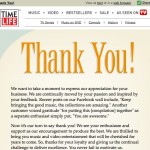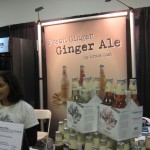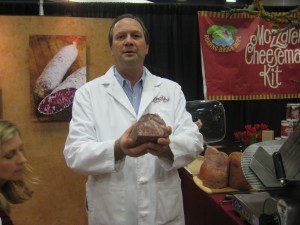Testimonials can be a key element in your marketing copy. They help attract new customers by showing that others have had a satisfactory ordering. They help bond existing customers by demonstrating that you’re a “real” organization with real consumer relationships. And, if you’re a new or little-known company, they show that you actually have customers.
In order to work well for you, the testimonials you use should have these characteristics:
They should be specific. I remember a Land’s End testimonial in which the customer says she’s been shopping “since way back when you sold sailing equipment”. Jackson & Perkins used a detailed anecdote about the customer who put his roses through a torture test in a Texas Panhandle winter. Specifics sell. These testimonials are believable, and make interesting reading in their own right…as opposed to generic one-liners or one-worders (“outstanding”, “excellent”) which seem contrived.
They should be realistic. Never correct your customers’ grammar or edit phrases to fit the King’s English. Write like they talk. (I do, however, correct spelling errors. No reason to let your helpful customers embarrass themselves.)
Resist the temptation to crop and consolidate. Leave in the rambling, off-the- subject asides; these provide the veracity you are seeking. Use ellipses sparingly and only when absolutely necessary (for example, because the quote isn’t understandable without this editing).
They should be relevant. A business-to-business client gave me a series of “testimonials” from dealers who said they were happy to be selling the product. This is not what the customer is looking for. Testimonials should be about the buying process (how easy it is, or how a problem was solved) or about their personal experience with their purchase.
They should be signed. Testimonials followed by initials and no address appear to be faked…even where they aren’t. Whenever possible, I include a full name and city in a testimonial from a consumer; name, title and company for a professional. If you must use initials to protect the customer’s privacy, include the city and state to retain believability.
THE RIGHT WAY TO GET TESTIMONIALS: Some categories, like gardening and other hobbies, seem to generate floods of unsolicited positive comments from customers who want you to know how well they’re doing with your merchandise. If this situation applies to you, you’re lucky. Much more likely, you’ll have to ask for testimonials.
Start with a customer service survey (something you should be doing anyway). Follow up with phone calls to promising responses. When you talk to them, have a mental list of topics you’d like to touch on and gently lead the conversation into these areas. Try to elicit case histories or other specific comments and examples. Before you hang up, ask if it’s okay to use the comments in your advertising. (Don’t push it if the answer is no.)
My next step is write up a transcript of my call notes, followed by a sanitized version in which I try to make the comments more coherent and cogent without editing out the customer’s personality. At the bottom I write:
[Company name] has my permission to use the above quotation in its advertising and promotional material [ ] as is [ ] with changes.
___________________________ Signature_______________Date
In the olden days I would send this self-contained authorization form to the interviewee, via fax or by mailing with a self-addressed stamped envelope. In almost every case, I received it back right away and with no changes. Today I’d be comfortable using email and using their reply as proof of consent. I’m not sure this would stand up in court, but if the customer objects to the use of their name you’re going to withdraw the testimonial anyway, right?
And speaking of legal issues: the above approval language was written without the help of a lawyer. Your legal department might want to add some “hold harmless” verbiage. Resist. The more mumbo-jumbo your customer has to sign his or her name to, the less likely you are to get an OK.
In closing, here are two ways not to get testimonials. Don’t invent them and then sign the name of a willing friend or co-worker. It’s smarter, and not much harder, to get the real thing (assuming your company has at least one satisfied customer, that is). Second, sometimes a well-meaning customer will offer to compose a testimonial for you. Never, never accept. The customer will write what they think you want to hear—and the result will be about as hokey as you can get, but you’ll feel obligated to use it to avoid hurting the customer’s feelings.
I recently ran across several articles I wrote for Catalog Marketer, a newsletter published by the late Maxwell Sroge. I’ll be sharing them in updated form over the next few weeks in the Copywriting 101 section.



